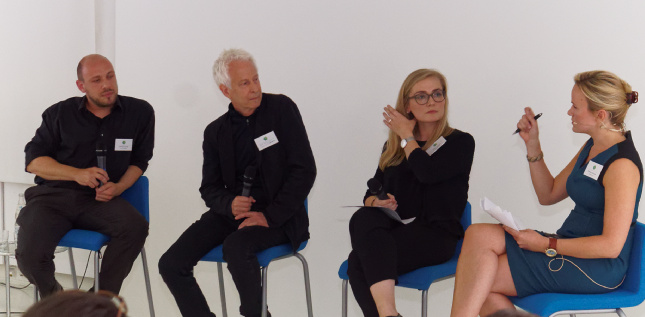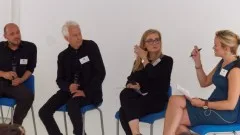The next panel was on Augmented Reality.
Dale Herigstad is CEO of SeeSpace and Clemens Conrad is CEO of Vectorform. Iljaitcsch stayed from the previous panel.
Herigstad said that his company, which we reported on at the 3IT last year, has now delivered the 1500 HDMI interface boxes that he offered via KickStarter. Conrad re-positioned his product as being an augmented reality product – a fair point given that his box adds TV programme information on top of TV. Conrad has done some work with Microsoft on Hololens and also in the early days of Google Glass, although he said that he disagreed with some aspects of Microsoft’s approach. He said that deciding that you can’t use touch as part of the interaction is a real problem in A/R.

Iljaitcsch said that adding A/R, for example by adding a diagram of how an engine works when you look at a car engine, can have a big impact on educational value. The sense of presence with children is very strong with A/R and that can transform educational experiences. SeeSpace also worked with Microsoft on how different people of a variety of ages interact with A/R.
There was a question of whether you should choose the device first, or the content, but the devices are so different that the device can have a big impact. Conrad said that his firm has tested the use of VR and AR over long periods of up to 6 hours. People find it hard to focus for much longer than 20 minutes. Some users, that interact with content (such as games) over long periods, even developed symptoms like jetlag. On that basis, VR content should be intended to only last (even movies) for 90 minutes or less, otherwise there could be significant negative effects.
Iljaitcsch said that in developing technology it is a good idea to really exploit the understandings from the world of anthropology. You have to understand how humans work.

